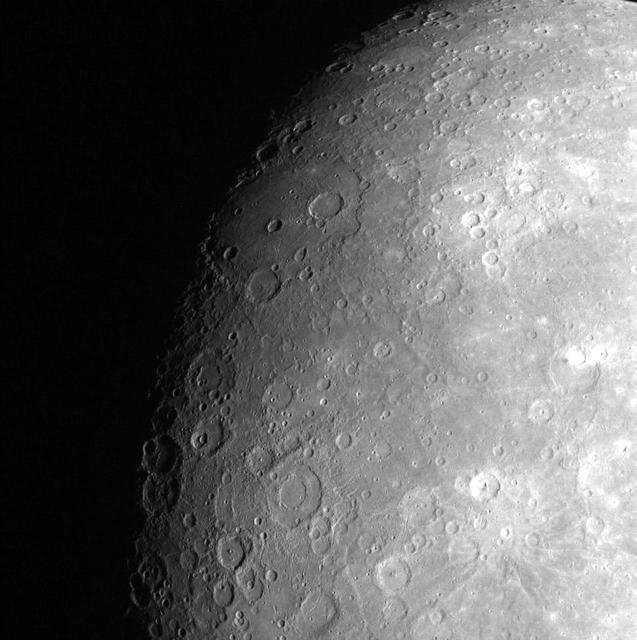The Moon
 Image provided by NASA.
Image provided by NASA.
The moon, Earth's only natural satellite, has fascinated humanity for millennia. Its gentle, silvery glow in the night sky has inspired countless poets, artists, and scientists. The moon is approximately 1/6th the size of Earth and orbits our planet at an average distance of about 238,900 miles (384,400 kilometers). It takes about 27.3 days to complete one orbit around Earth, and its rotation is synchronized with its orbital period, which means we always see the same face of the moon from Earth. This phenomenon is known as "tidal locking." The moon's surface is marked by a stark contrast between the lunar highlands and the vast, dark plains known as maria, which were formed by ancient volcanic activity. The moon's lack of a substantial atmosphere and its harsh, airless environment make it a starkly different world from Earth. The moon has played a crucial role in shaping Earth's geological history and even influencing life on our planet. Its gravitational pull causes the tides in Earth's oceans, which have had a significant impact on the evolution of life along coastlines. The moon has also served as a source of wonder and inspiration for cultures around the world, giving rise to myths, legends, and scientific exploration. It has been the focus of numerous space missions, including the historic Apollo program, which brought astronauts to the moon's surface in the late 1960s and early 1970s. The study of the moon continues to provide valuable insights into the early history of the solar system and has potential implications for future space exploration and colonization. The moon's surface is a desolate and stark landscape, characterized by extremes in temperature, with daytime temperatures reaching up to 127 degrees Celsius (260 degrees Fahrenheit) and plummeting to around -173 degrees Celsius (-280 degrees Fahrenheit) at night. It is also pockmarked with countless impact craters, the result of billions of years of collisions with asteroids and comets. Some of these craters are so vast that they can be seen from Earth with the naked eye, such as the magnificent Copernicus and Tycho craters. Additionally, the moon features deep valleys, known as rilles, and towering mountain ranges like the Apennines and the Taurus Mountains, remnants of ancient geological processes. The moon's surface has been studied extensively through telescopes, robotic landers, and manned missions, revealing valuable insights into its geological history and the broader history of our solar system. Moreover, the moon has a profound influence on Earth's culture, mythology, and even our sense of time. Many ancient civilizations used the moon to create calendars, and the moon's phases continue to play a significant role in religious and cultural observances for various communities around the world. The word "month" itself is derived from the moon's orbit, and its phases have been associated with myths and legends across different cultures. The moon's role in illuminating the night sky has also been a source of inspiration for artists, poets, and writers, contributing to the rich tapestry of human creativity. As we continue to explore and study the moon, it remains a symbol of mystery and exploration, reminding us of the vastness and beauty of the cosmos beyond our home planet. One of the moon's most fascinating aspects is its potential as a stepping stone for future space exploration and potential human colonization. The moon's proximity to Earth, along with its resources like water ice at the lunar poles, makes it an ideal candidate for launching missions deeper into the solar system, including Mars. Plans for lunar bases and habitats are being actively considered, and international space agencies and private companies are working on projects to establish a sustainable human presence on the moon. The moon's surface could serve as a testing ground for technologies and systems that will be crucial for long-duration space missions to more distant destinations. As we look to the future, the moon holds the promise of not only expanding our understanding of the universe but also providing a platform for humanity to reach new horizons in space exploration.
Moon Facts
| Property | Details |
|---|---|
| Name | Moon |
| Diameter | 3,474.8 kilometers |
| Orbit around Earth | Approximately 27.3 days |
| Surface Temperature | -233°C to 123°C |
| Gravity | 1.622 m/s² (approximately 1/6th of Earth's gravity) |